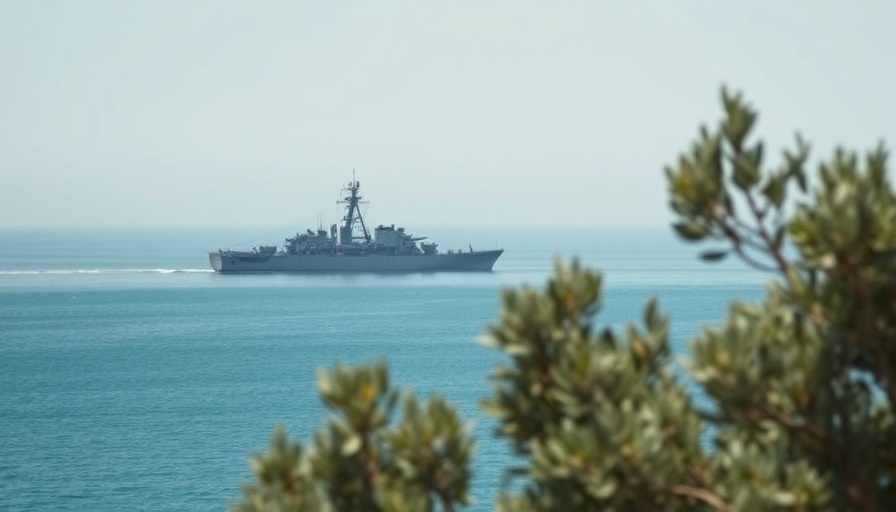
Changing Dynamics in Mediterranean Naval Presence
As geopolitical landscapes shift, NATO has observed a significant reduction in Russia's naval assets within the Mediterranean Sea. This decrease, largely attributed to operational readiness issues and strategic focus on the Baltic Sea, marks a notable shift in maritime power dynamics. Historically, Russia maintained a robust naval presence, leveraging its logistical base at Tartus, Syria, to project force in Mediterranean waters. However, the withdrawal of Russian assets signals emerging challenges within the Russian Navy, hindering Moscow’s ability to exert influence in the region.
Strategic Losses: The Impact of Tartus
The termination of Russia's long-standing agreement for its naval base in Tartus drastically alters the operational landscape. Established in 1971, this port was vital for replenishment and maintenance of Russian naval forces conducting operations in the Mediterranean. With this strategic loss, maintaining long-term operational capabilities becomes a daunting task for the Russian Navy. A recent report highlighted how the operational mobility of subs, such as the Kilo-class submarine Novorossiysk, now requires extensive travel for repairs, limiting immediate response to regional threats.
NATO’s Enhanced Military Readiness in Response
The strategic vacuum left by Russia’s withdrawal has prompted NATO to ramp up its maritime presence in the Mediterranean and Baltic regions. Initiatives like the Baltic Sentry mission are designed to bolster maritime security and maintain regional stability. Furthermore, NATO's focus on enhancing surveillance and resource allocation to these critical areas demonstrates an adaptation to perceived threats posed by a waning Russian presence.
Force Generation Challenges Facing the Russian Navy
NATO officials attribute Russia's diminishing naval capabilities to a combination of force-generation challenges and an aging fleet. Modernization initiatives have faced setbacks, further compounded by significant military expenditures in other conflict zones, particularly the ongoing war in Ukraine. This situation has resulted in a logistical bottleneck, making it difficult for Russian forces to deploy effectively.
Future Predictions: The New Naval Landscape?
Forecasting the Russian Navy's future role in Mediterranean waters recommends a reassessment of naval strategy. Analysts indicate that, depending on the geopolitical climate, Russia may still strive to maintain a semblance of naval power through alternative partnerships and investments in technology. Engaging private military firms or collaborating with allies like Iran could help sustain Russia’s operational presence in the face of growing isolation.
Balancing Power: The Broader Implications
The decline of Russian naval power in the Mediterranean not only affects regional stability but significantly reshapes the power balance in international waters. With dwindling naval assets, NATO gains the upper hand, reflecting on opportunities for stronger interventions or support for allied nations in the region. This transition highlights how geopolitical shifts can fundamentally alter naval strategies worldwide.
As the Mediterranean navigates through these tumultuous waters, stakeholders on both sides must adapt to the changing dynamics in maritime security. The awareness of Russia's diminishing capabilities provides NATO with a platform from which to fortify its alliances and operational strategies.
Ultimately, the outcomes of these shifts will hinge on the interplay of military readiness, strategic resource allocation, and diplomatic engagements on both fronts.
 Add Row
Add Row  Add
Add 




Write A Comment